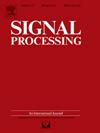An index of effective number of variables for uncertainty and reliability analysis in model selection problems
IF 3.4
2区 工程技术
Q2 ENGINEERING, ELECTRICAL & ELECTRONIC
引用次数: 0
Abstract
An index of an effective number of variables (ENV) is introduced for model selection in nested models. This is the case, for instance, when we have to decide the order of a polynomial function or the number of bases in a nonlinear regression, choose the number of clusters in a clustering problem, or the number of features in a variable selection application (to name few examples). It is inspired by the idea of the maximum area under the curve (AUC). The interpretation of the ENV index is identical to the effective sample size (ESS) indices concerning a set of samples. The ENV index improves drawbacks of the elbow detectors described in the literature and introduces different confidence measures of the proposed solution. These novel measures can be also employed jointly with the use of different information criteria, such as the well-known AIC and BIC, or any other model selection procedures. Comparisons with classical and recent schemes are provided in different experiments involving real datasets. Related Matlab code is given.
用于模型选择问题中不确定性和可靠性分析的有效变量数量指标
为嵌套模型中的模型选择引入了有效变量数(ENV)指标。例如,当我们需要决定多项式函数的阶数或非线性回归中的基数,在聚类问题中选择聚类的数量,或在变量选择应用中选择特征的数量时(仅举几例)。它受曲线下最大面积(AUC)的启发。ENV 指数的解释与关于一组样本的有效样本大小(ESS)指数相同。ENV 指数改善了文献中描述的肘部检测器的缺点,并为所提出的解决方案引入了不同的置信度指标。这些新指标还可以与不同的信息标准(如著名的 AIC 和 BIC)或其他模型选择程序结合使用。在涉及真实数据集的不同实验中,提供了与经典和最新方案的比较。还给出了相关的 Matlab 代码。
本文章由计算机程序翻译,如有差异,请以英文原文为准。
求助全文
约1分钟内获得全文
求助全文
来源期刊

Signal Processing
工程技术-工程:电子与电气
CiteScore
9.20
自引率
9.10%
发文量
309
审稿时长
41 days
期刊介绍:
Signal Processing incorporates all aspects of the theory and practice of signal processing. It features original research work, tutorial and review articles, and accounts of practical developments. It is intended for a rapid dissemination of knowledge and experience to engineers and scientists working in the research, development or practical application of signal processing.
Subject areas covered by the journal include: Signal Theory; Stochastic Processes; Detection and Estimation; Spectral Analysis; Filtering; Signal Processing Systems; Software Developments; Image Processing; Pattern Recognition; Optical Signal Processing; Digital Signal Processing; Multi-dimensional Signal Processing; Communication Signal Processing; Biomedical Signal Processing; Geophysical and Astrophysical Signal Processing; Earth Resources Signal Processing; Acoustic and Vibration Signal Processing; Data Processing; Remote Sensing; Signal Processing Technology; Radar Signal Processing; Sonar Signal Processing; Industrial Applications; New Applications.
 求助内容:
求助内容: 应助结果提醒方式:
应助结果提醒方式:


